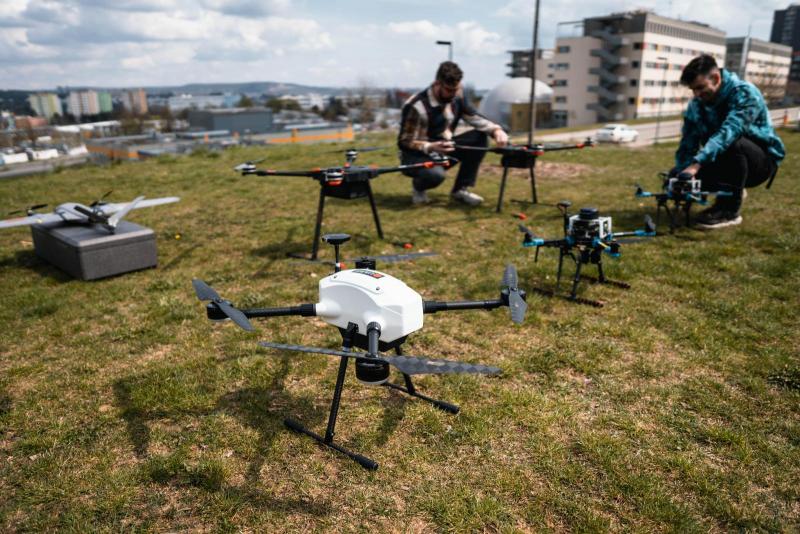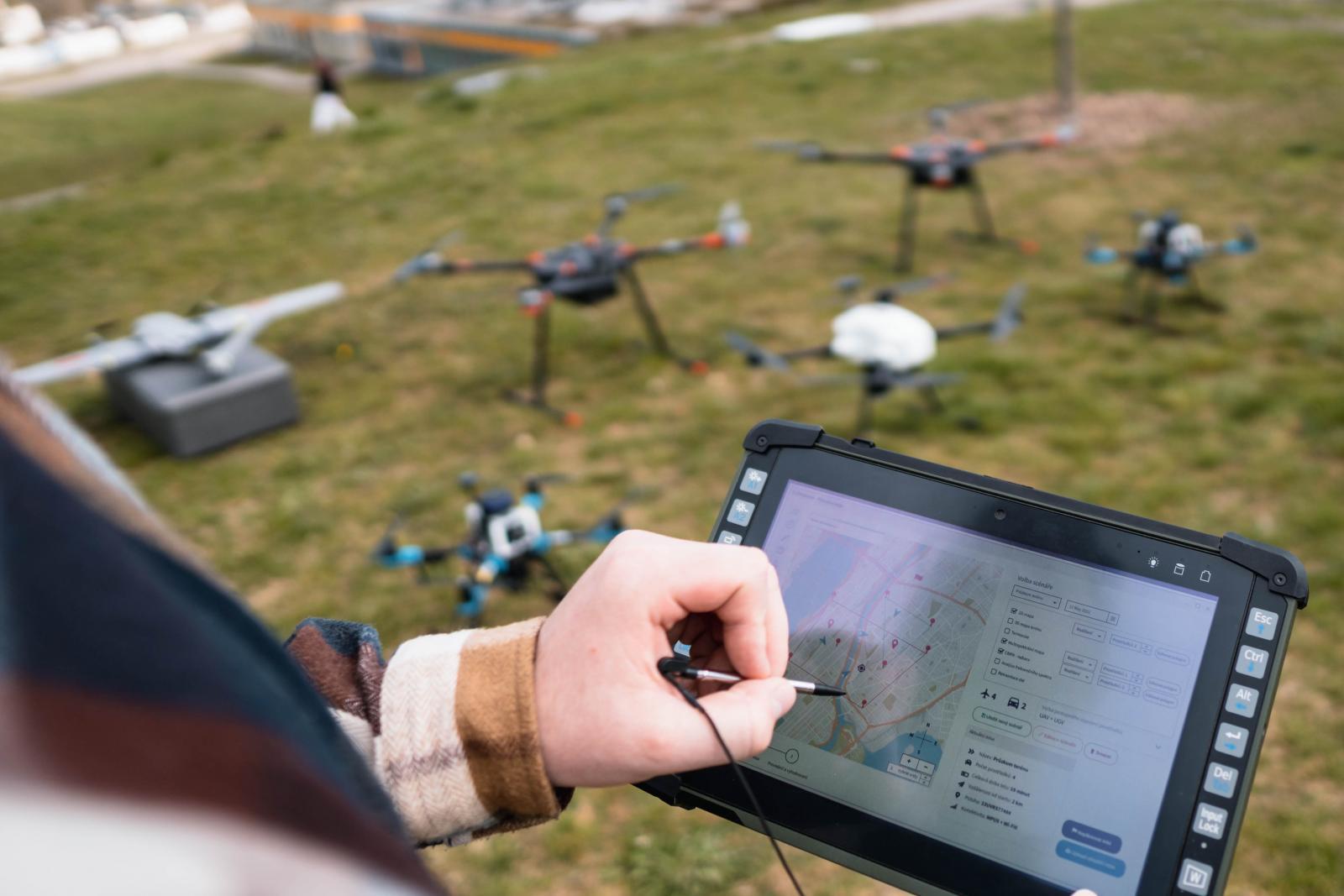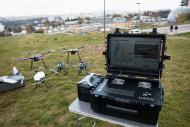Topic
Swarm of unmanned drones with ground robots to help army survey hazardous areas

A chemical plant accident, a hit by a dirty bomb or a military attack. A multi-agent system of unmanned drones and ground robots controlled by artificial intelligence will enable quick and detailed human exploration of risk areas. Researchers from FEEC BUT are currently working on its development in cooperation with the University of Defence. It will be presented for the first time at the upcoming IDET International Defence and Security Technology Fair in May.
The use of drones in the military or the police is nothing new at the moment. They are mostly used in manual mode, where the drone is controlled in real time by the operator. However, the survey system, which experts from FEEC BUT and the University of Defence began to develop a year ago, will offer much more complex survey options. Instead of one drone, a whole swarm will fly into the air equipped with sensing technology - radiation detectors and conventional and thermal imaging cameras. It will be accompanied by ground robots, which will supplement the data obtained from the aerial view with those on the ground.
“The security specialist marks the area of interest on the map. He then presses a button and a swarm of drones, along with ground robots, explores the area. Thanks to the use of artificial intelligence, the system will be autonomous and will work even without human control. If some drones are lost - whether due to enemy intervention or weather effects, the system should solve the entire task by itself," Luděk Žalud from FEEC BUT explains.
A system of unmanned drones with ground robots can take up-to-date three-dimensional maps of the area. Specialists will thus immediately obtain information on whether the adversary has deployed military equipment in a given area or how much damage the attack has caused to buildings. Mapping will be possible not only in the visible spectrum, but also in the infrared thanks to the use of thermal imaging, which will enable, for example, the detection of people. In this way, the military and other branches will obtain information about the situation and the security of the terrain before they send a unit there.

"The swarm detects that there is a source of radiation in the area and passes the information to a ground robot, which can come to the location and conduct a more detailed survey or take samples," the project leader Petr Marcoň from FEEC BUT describes one of the scenarios.
The experts also plan to incorporate the Orpheus series ground robot into the survey system. Since 2003, Luďek Žalud's team has been developing these machines in several versions - both for military and civilian use. In addition, however, they will also develop a small mobile robot that can be carried by drone to the desired location.
In addition, the flight paths of individual drones will be dynamically reconfigurable. Artificial intelligence algorithms can change the route of the drones during the intervention so that the given area is explored as quickly as possible. Artificial intelligence will also be used in the recognition of objects in the field, including camouflaged military equipment.
The joint project of experts from FEEC BUT and the University of Defence was originally intended to serve only the army. The police and firefighters have already shown interest in it. It will also be used by security forces for chemical, biological and nuclear defence.
"If there was an explosion of a so-called dirty bomb, which is a bomb with radioactive material that is dispersed over a wide area after the explosion, it will be possible to find out with the help of our reconnaissance system whether the area is safe or whether there is a source of ionizing radiation," Žalud explains.
"There are more and more subjects interested in the system. Therefore, we are thinking about the development of a more massive system, where each of the users will be able to choose only some robotic elements according to the sensor equipment. Under normal circumstances, each component will only use its part, but in the event of a greater threat, they can cooperate," Marcoň adds.
The survey system is currently in its second year of development, and should be ready at the end of 2025.
Scientists from FEEC BUT are participating in the development of a smart intersection. This could make transport more efficient and ensure greater safety
Doctors and technicians focus on radiation exposure after a nuclear disaster or the effectiveness of radiotherapy
Artificial intelligence will help to detect failures of the energy system
Miroslav Kasal: Experimental radio electronics is my life's credo
YSpace succeeds in prestigious ESA programme and heads to space
